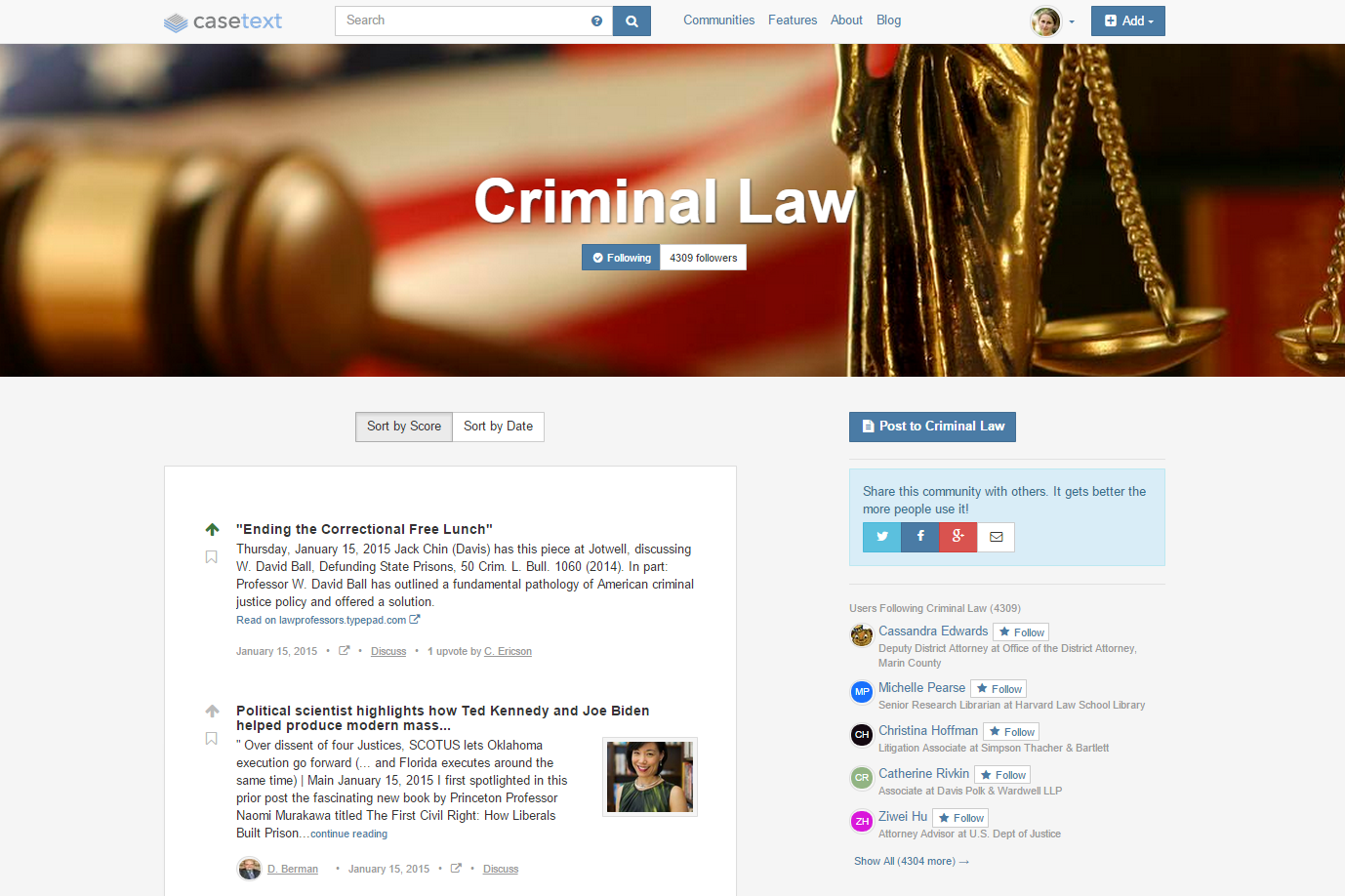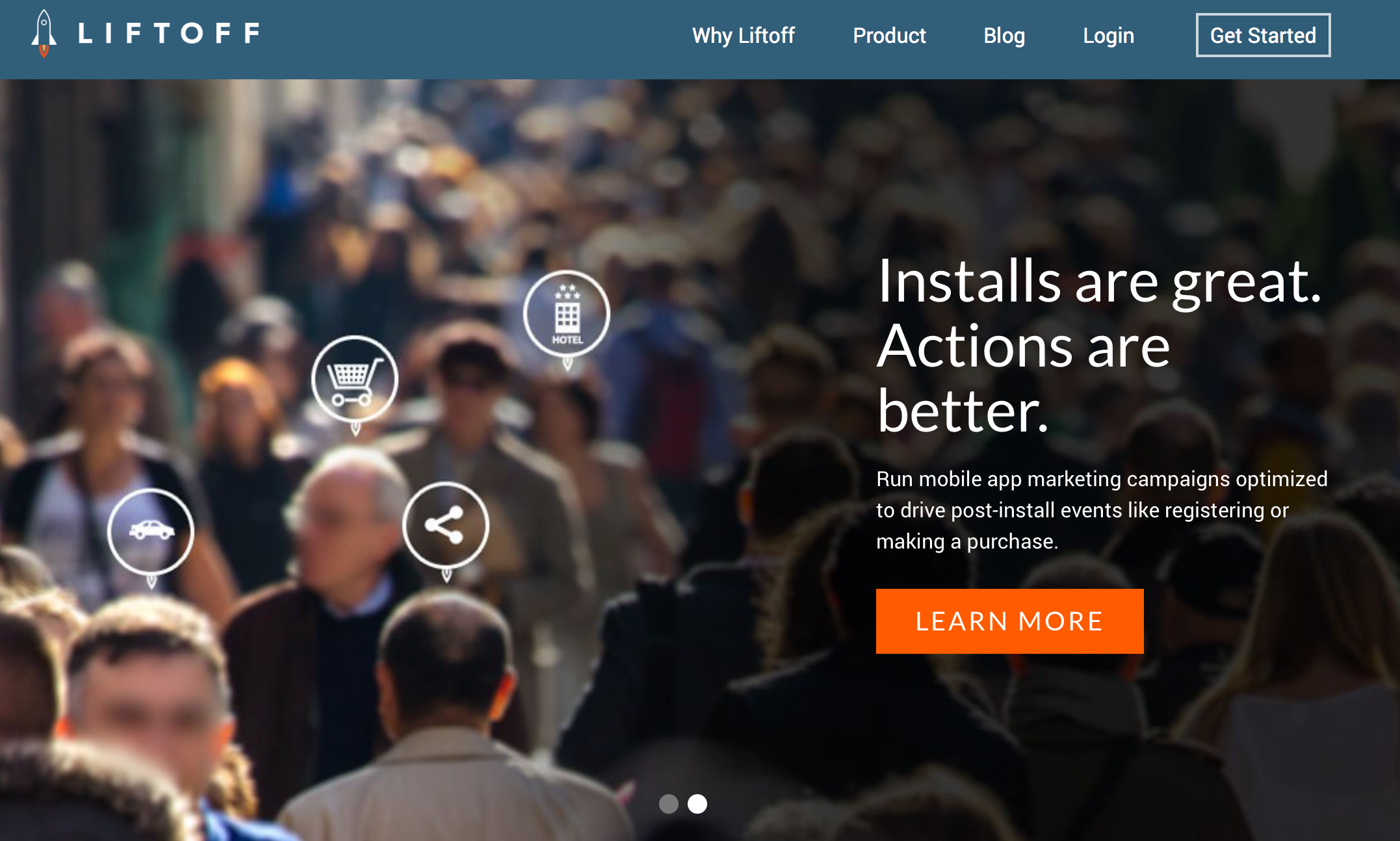 A Q&A with Casetext co-founder and CEO Jake Heller. The Palo Alto-based startup, which is building a public legal research tool with features intended to better contextualize U.S. law for users, announced at the start of this month the completion of a $7 million Series A funding round. Investors include Union Square Ventures, Formation 8 and former Thomson Reuters CEO Tom Glocer. It was founded in 2013, and previously raised $1.8 million in Seed funding. The team is a graduate of Y Combinator’s Summer 2013 accelerator class.
A Q&A with Casetext co-founder and CEO Jake Heller. The Palo Alto-based startup, which is building a public legal research tool with features intended to better contextualize U.S. law for users, announced at the start of this month the completion of a $7 million Series A funding round. Investors include Union Square Ventures, Formation 8 and former Thomson Reuters CEO Tom Glocer. It was founded in 2013, and previously raised $1.8 million in Seed funding. The team is a graduate of Y Combinator’s Summer 2013 accelerator class.
SUB: Please describe Casetext and your primary innovation.
Heller: Casetext uses crowdsourcing and data science to make the law free and understandable. Most people don’t realize that the law actually isn’t freely available. ‘The law’ involves literally millions of documents, and they’re actually extraordinarily expensive to access and difficult to understand—both for lawyers and the public.
The old way of doing things misses the most valuable source of context—the legal community itself. Lawyers already share insight about the law publicly to demonstrate thought leadership and grow their reputation. By building the best platform to write commentary on the law, we’re working with the legal community to create an insightful, free legal resource for lawyers and the public.
SUB: Who are your target markets and users?
Heller: The group that benefits most professionally is lawyers. Most of them spend an inordinate amount of time researching and writing about the law. Casetext has made searching the law free, and we’re creating a better way to write about the law—linked to primary legal documents. By putting the law itself and legal commentary on the same platform, linked to a professional network, authors have a built-in audience of interested readers who are already looking for answers to legal questions.
The reality is that the universe of people who benefit from Casetext is actually much broader. By posting legal commentary on Casetext, attorneys aren’t just building their own professional reputations, they’re also contributing to an open resource that’s now accessible to business leaders, educators, media, civil society, and anyone across the world with access to the web.
As this movement grows, we’re in essence working together to create an open repository of legal knowledge, which not only will change how lawyers interact with one another, but also how the public accesses the law.
SUB: Who do you consider to be your competition, and what differentiates Casetext from the competition?
Heller: We’re responding to what we see as both a market inefficiency and a social justice problem—that the law is extraordinarily expensive to access and difficult to understand. The legal research industry is an $8 billion industry, with a number of companies large-and-small contending. However, Casetext is the only project working to apply information-sharing strategies that have transformed other industries to law.
We think the most valuable resource to help make the law understandable is the knowledge of experienced attorneys. Casetext is the first attempt to apply a community-driven approach to the law.
SUB: You just announced that you’ve raised $7 million in Series A funding. Why was this a particularly good time to raise more funding?
Heller: We were able to do a lot with our Seed financing, building to a place where around a quarter-million people use Casetext each month. We’ve also grown a fantastic core team, with engineers and designers from places like Google, IBM, and Zillow, and lawyers from the country’s best law schools and firms. We decided to raise now to build on our initial successes; we need to expand our team to tackle some of our most ambitious technological goals, and we’ll increase the coverage of our legal library so that more attorneys can rely on Casetext as their primary source of legal information.
SUB: How do you plan to use the funds, and do you have plans to seek additional outside funding in the near future?
Heller: We’re going to expand our technical team to help build core aspects of our technology. We’re applying data science to determine which contributions to highlight, making the process of contributing tailor-fit to the law, and using natural language processing to help extract insights from the millions of pages of law and thousands of contributions to enhance our users’ understanding of the law.
We don’t plan to seek additional funds in the near future.
SUB: What was the inspiration behind the idea for Casetext? Was there an ‘aha’ moment, or was the idea more gradual in developing?
Heller: I’m a lawyer, but I’ve also been programming since childhood. Growing up in Silicon Valley, I was used to seeing the Internet used as a platform to liberate previously closed information. Wikipedia is the greatest collection of human knowledge ever amassed; I use Yelp, not Zagat; and Waze is much better at predicting traffic than anything else out there. In countless fields, crowdsourcing knowledge created a valuable public resource that was also free. For a long time it struck me as counterintuitive that this phenomenon hadn’t reached the law. So, after mulling this idea for years, I finally decided to do something about it.
SUB: What were the first steps you took in establishing the company?
Heller: Once I decided to throw myself into building Casetext, I quit my job as a litigator at a large Boston law firm and applied to Y Combinator, where Casetext was part of its Summer 2013 class. I coded the first version of the site myself, which allowed users to search and annotate federal case law, and after raising Seed funding, assembled a core team of awesome engineers from Google and IBM to build out the vision.
SUB: How did you come up with the name? What is the story or meaning behind it?
Heller: When most people think about law they think about legal texts—the judicial opinions, statutes, and regulations that collectively make up the corpus of American law. But as most lawyers know, the context of the law, or how each individual case or legal text fits into the ecosystem of laws, is just as important to understanding how laws are applied in any given case. ‘Casetext’ is meant to communicate both of these concepts—the centrality of the case law itself, linked to the valuable context from the insights of the legal community.
SUB: What have the most significant challenges been so far to building the company?
Heller: To be the place lawyers go for legal information, it’s important that we have enough of the law that most lawyers can do most of their legal research and writing on Casetext. Obtaining the over six million cases, statutes, and regulations in our library in a structured, usable form has been no trivial matter, but we are rapidly building a comprehensive database of American law.
SUB: How do you generate revenue or plan to generate revenue?
Heller: Searching the law and community-sourced commentary is and will always be free on Casetext. We will, in the future, launch a premium subscription with advanced legal research features that tap data science and natural language processing to make high-level legal research easier and more efficient for lawyers.
SUB: What are your goals for Casetext over the next year or so?
Heller: We’re focused on becoming the best place to read, understand and share legal commentary online.















